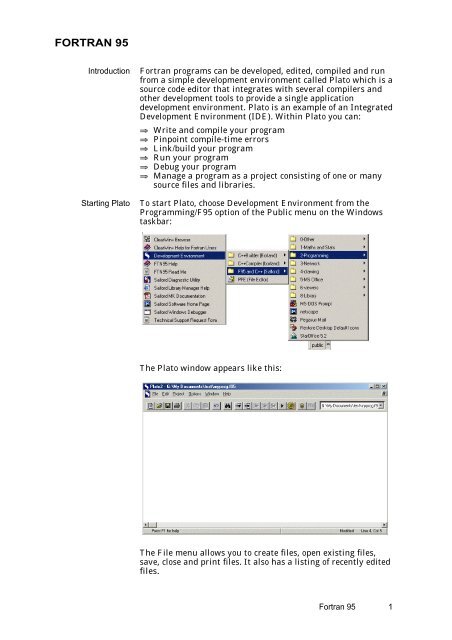

Variables can be defined implicitly: A-H,O-Z are REAL and I-N are INTEGER.Īll variables are local to the routine (main program, subroutine or function). Use a card sorter to put the deck back into the right order. Fortran 90 uses an & at the end of the line to be continued or the first char of the continuation.ħ3-80 statement (card) numbering so when you drop your deck of cards you can You can have up to 19 continuation lines.Īn asterisk is commonly used. Numbers need not be consecutiveĬolumn 6 if non-blank signals that the line isĪ continuation of the previous line. That are not referenced are not numbered. You periodically refer to statements by these numbers.
#Fortran read last line from file free
Later dialects are free form.Ĭolumns 1-5 hold optional statement numbers alaīASIC. Source Syntax Fortran 77 is fixed format.

One main routine (which can be unnamed) among the files that make up the necessaryĭata are passed among routines by parameter passing or by COMMON blocks.ĬOMMON blocks provided a global sharing capability. These routines may be distributed across more than one file. We consider the basics of Fortran 77 and 90.Ī program is composed of a main program and supporting FUNCTIONs or SUBROUTINEs. There is now FORTRAN 2003 that supports vector machines. There are additionally, odd restrictions grounded in early limitations of earlierįortran 90/95, which contains parallelization extensions and modernization of programming abstractions, is based on Fortranħ7 variation of 90/95 will be shown in red. A program reads and writesĮntire lines (cards) of data at a time, not just a few bytes.

forecasting,įortran programs have a "batch" oriented perspective. There are many Fortran programs/subroutinesĮxisting programs are candidates for parallel processing (e.g. You then start the parse-script, and you should see how new lines added to myfile.csv with "status" in the 7th field are printed to stdout.Historically FORTRAN was the language of scientists and engineers-that's who
#Fortran read last line from file update
Then you have another script which reads and parses your CSV file, and starts the database update script. # redirecting stderr to stdout so awk will see it. It's also my understanding that you will NOT edit the myfile.csv file, but use the 3 mentioned variables as input to an update script/job.įirst, create the script which updates your MySQL database. You are not writing how you will update your database so I'll write up something which might get you started. Tail -F myfile.csv | awk -F, '$7 = "status" ' # Inside awk: See if field 7 = "status" and print fields 4, 5 and 10 # awk -F, sets FS - Field Separator to a comma # Capital F to follow even if the file is reset to zero, recreated, etc. Short answer: # tail -F: output appended data as the file grows And this will happen over and over again. So the output can be something as follows: variable_1=TMX6BPĪs mentioned these three variables will be pushed/sent out to update a MySQL table (which needs these three variables in order to update itself) until the next line is printed in to the myfile.csv. Q: How can I read the last line where the 7th value is 'status' not 'SVlts' of the myfile.csv file with bash? Once read how can I assign the 4th, 5th and 10th value to a 3 different variables? I will be pushing these values out to update a MySQL table. So the last line of the csv file would constantly be changing however it would still be in the same format.


 0 kommentar(er)
0 kommentar(er)
